4 Secret Design Patterns To Learn From Nature
Beautiful designs inhabit the natural world. Keen observers will notice familiar patterns in plants, animals, and natural elements. These patterns are woven into the fabric of nature and derive from the most universal language: math! While people typically crown designers as artists and creatives, the role of math in design often goes overlooked. Behind the scenes, design work hinges on numbers, geometry, and calculations to achieve success. Nature has an awe-inspiring complexity that is a tremendous source of design inspiration.
This article outlines 4 of nature’s naturally occurring patterns from the universe. These alluring designs originated organically and were later artificially recreated by humans. Let’s unpack the intricate patterns that illuminate the beauty of our world.
Spirals
A spiral is a shape that curves around a central point and moves closer or farther away. Spirals demonstrate how nature grows and expands in response to physical forces. Some spirals grow large as they curl outward, while others stay shallow as they hug inwards. The pattern is fluid and provides a visually hypnotic shape.
Spirals are abundant in nature. Natural spirals exist in seashells and hurricanes, but their limitations know no bounds. The pattern also applies to human creations like spiral staircases and corkscrews. Even lighting fixtures and heating devices embrace this natural pattern to transfer energy efficiently. Designers ultimately rely on spiral patterns because they support structural stability and spatial optimization.
Hurricanes and Staircases have similar patterns that display spirals.
Fractals
Fractals are clues to understanding the complexity of nature. They are geometric shapes and patterns that scale and look similar no matter how far you zoom in or out. Many things that look random or irregular can be described mathematically by a fractal pattern with repeated rules. Nature is usually rough, not smooth, so fractals often describe it best.
A particular example is how a tree continuously divides into two smaller branches. Another place this pattern appears is in coral reefs. Relying on a fractal pattern helps nature grow and absorb more resources across a larger surface area. Fractal patterns also manifest in human designs, such as fractal antennas that achieve high-performance broadband in a compact body thanks to their geometry. Aesthetically, they inhabit jewelry design to enhance the perception of elegance and intricacy.
Tree branch growth and Jewelry design are two common places to spot fractals.
The Golden Ratio
The Golden Ratio (aka Phi – ɸ) is approximately 1.618. This value comes from the Fibonacci sequence and represents the relationship between two adjacent numbers. Many famous proportions approach the Golden Ratio because incorporating it into dimensions, quantities, and volumes can guide visual and functional harmony.
The Golden Ratio is frequent in nature and the human world. Living creatures’ anatomy leans into this ratio when growing the “ideal” proportions. For instance, architectural masterpieces like the Taj Mahal and the Parthenon utilize this ratio. Even musical instruments are a great example of products that leverage the Golden Ratio. Notice how most guitars have bodies proportional to the Golden Ratio to maximize sound quality and ergonomics.
The anatomy of humans and guitars commonly use the Golden Ratio in their dimensions.
Voronoi
The final hidden pattern of nature is the Voronoi pattern. The Voronoi pattern favors efficiency as it creates a tight, short, and nearby pattern. In this design, all parts have specific spaces. Even lines divide the segments so they are in the middle of neighboring seed points, and no cell intrudes on the space of another cell.
In nature, this pattern famously appears in beehive honeycombs and on the kernels of corn on the cob. These patterns optimize resources, ensuring each bee or corn piece gets a fair share of nutrients. These natural occurrences demonstrate how the pattern organizes space in biological structures and extends to product design. Voronoi Patterns can create dynamic textures and aesthetics in products like packaging, kitchenware, and building details. A Voronoi offers design flexibility since they can match various sizes, colors, and material configurations.
Giraffe skin and this Alexa case show off Voronoi patterns.
So I know Nature’s Patterns. Now What?
Nature’s hidden design patterns reveal a wealth of inspiration and wisdom for designers and all creatives. From mesmerizing spirals and fractals to harmonious ratios to efficient Voronois, nature has planted the seeds for proven design blueprints. These patterns captivate the eye and guide design principles for structurally sound, aesthetically pleasing, and resource-efficient concepts.
Beyond Design encourages designers and creatives to draw influence from Mother Nature. Take the time to appreciate and recognize when and where these patterns occur. Integrating natural motifs into your designs can infuse products with the universe’s inherent beauty and timeless efficiency.
Getting out and observing nature and products is a fun way to spot patterns.
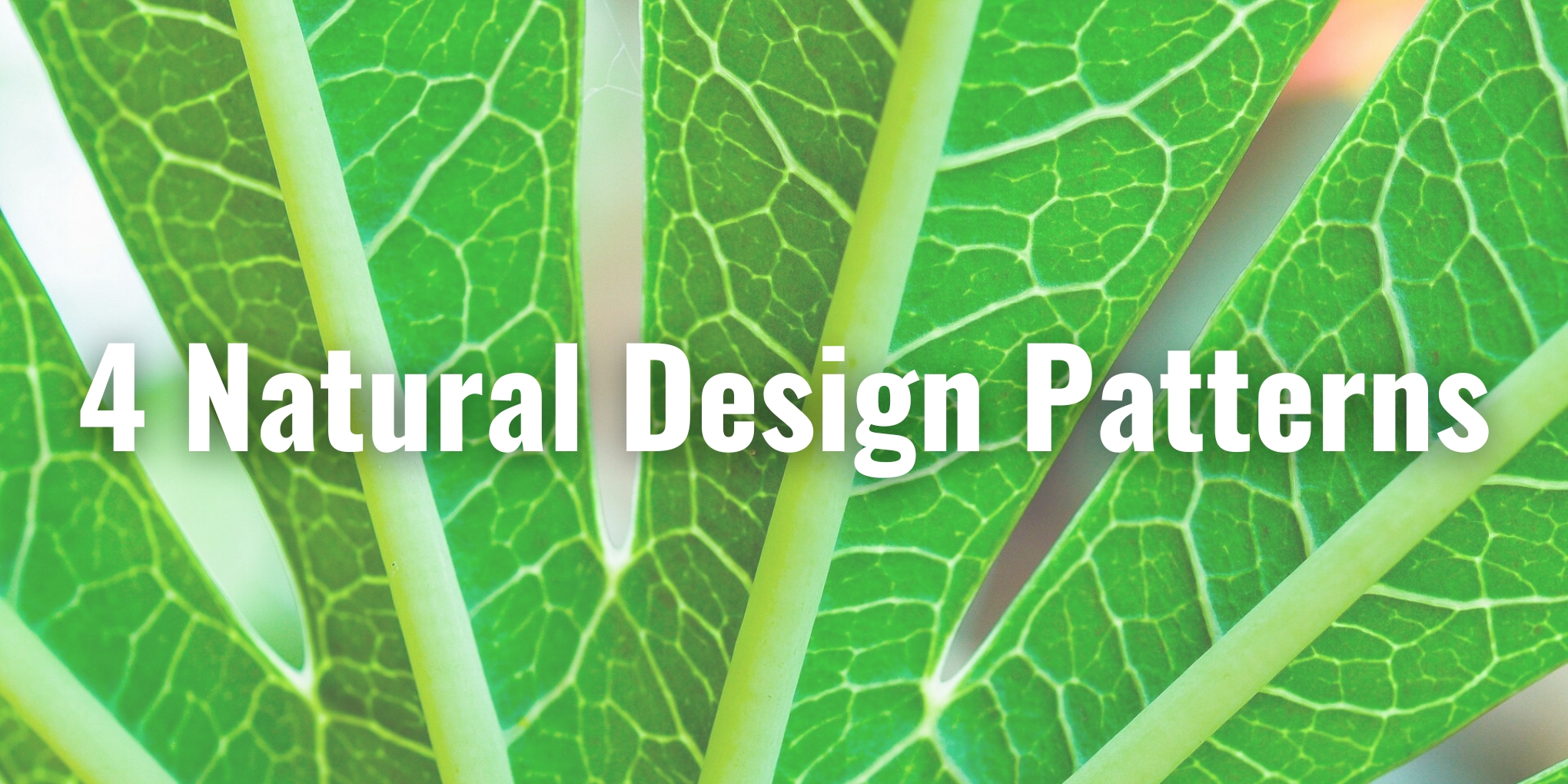
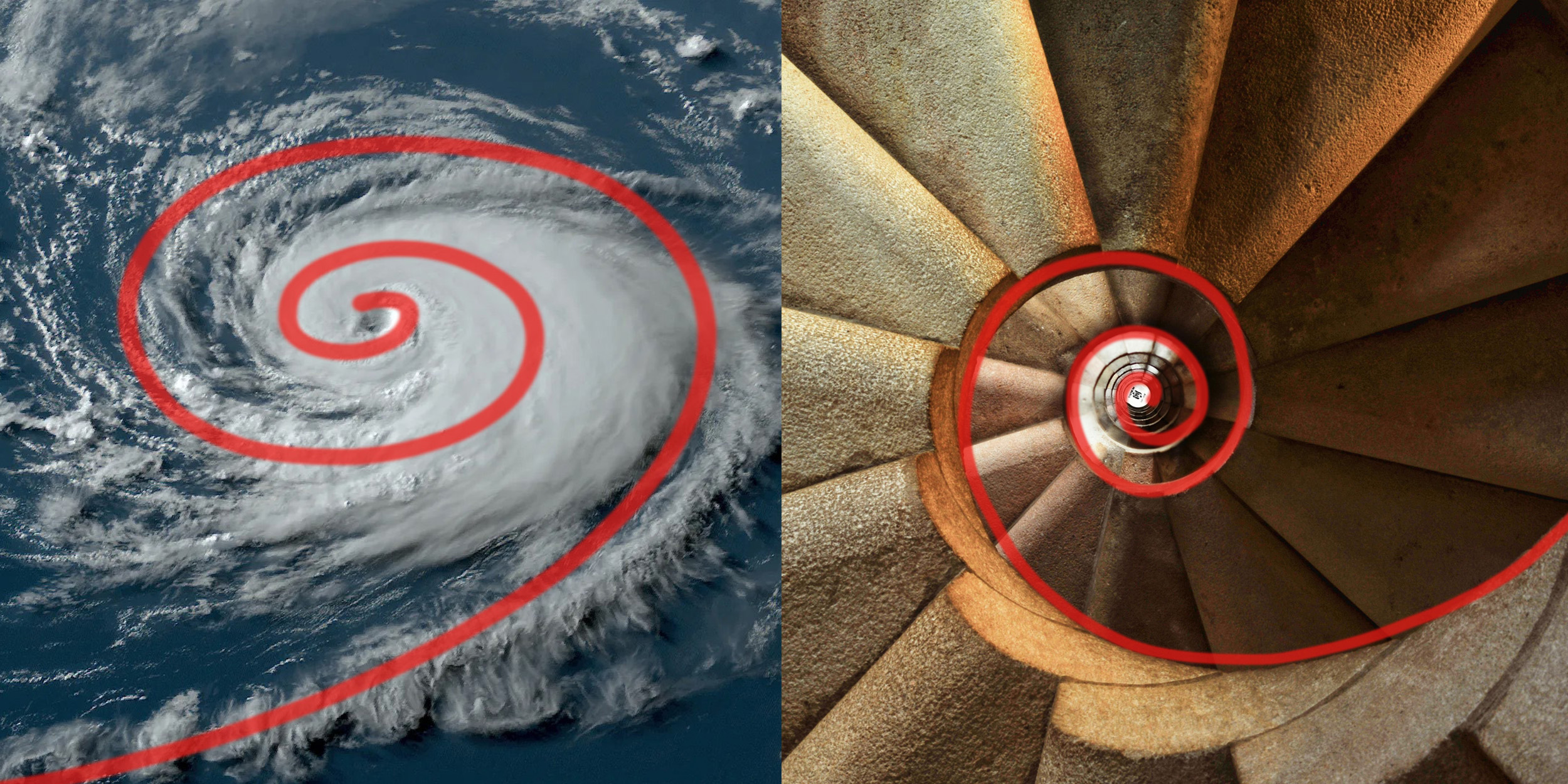
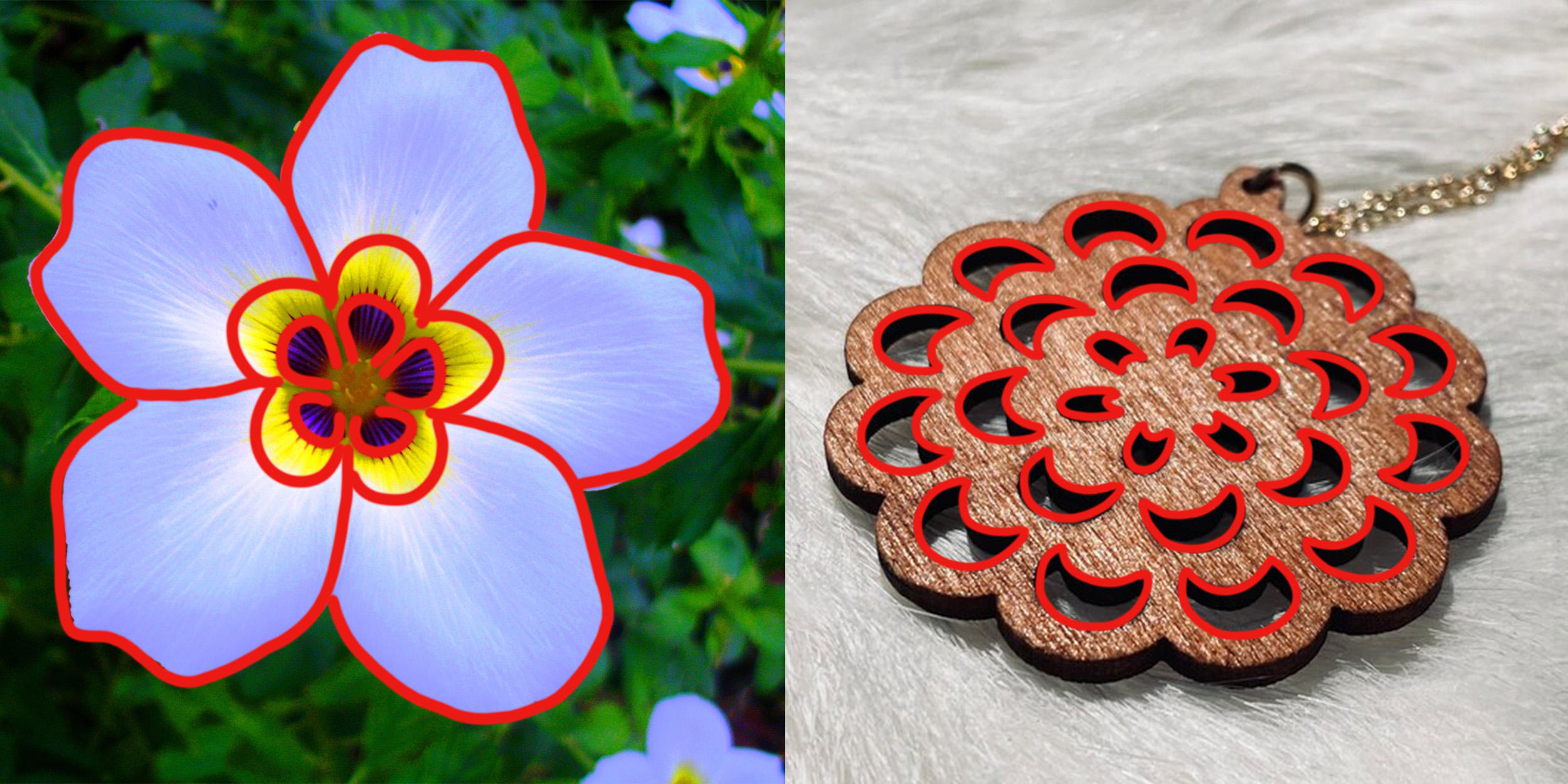
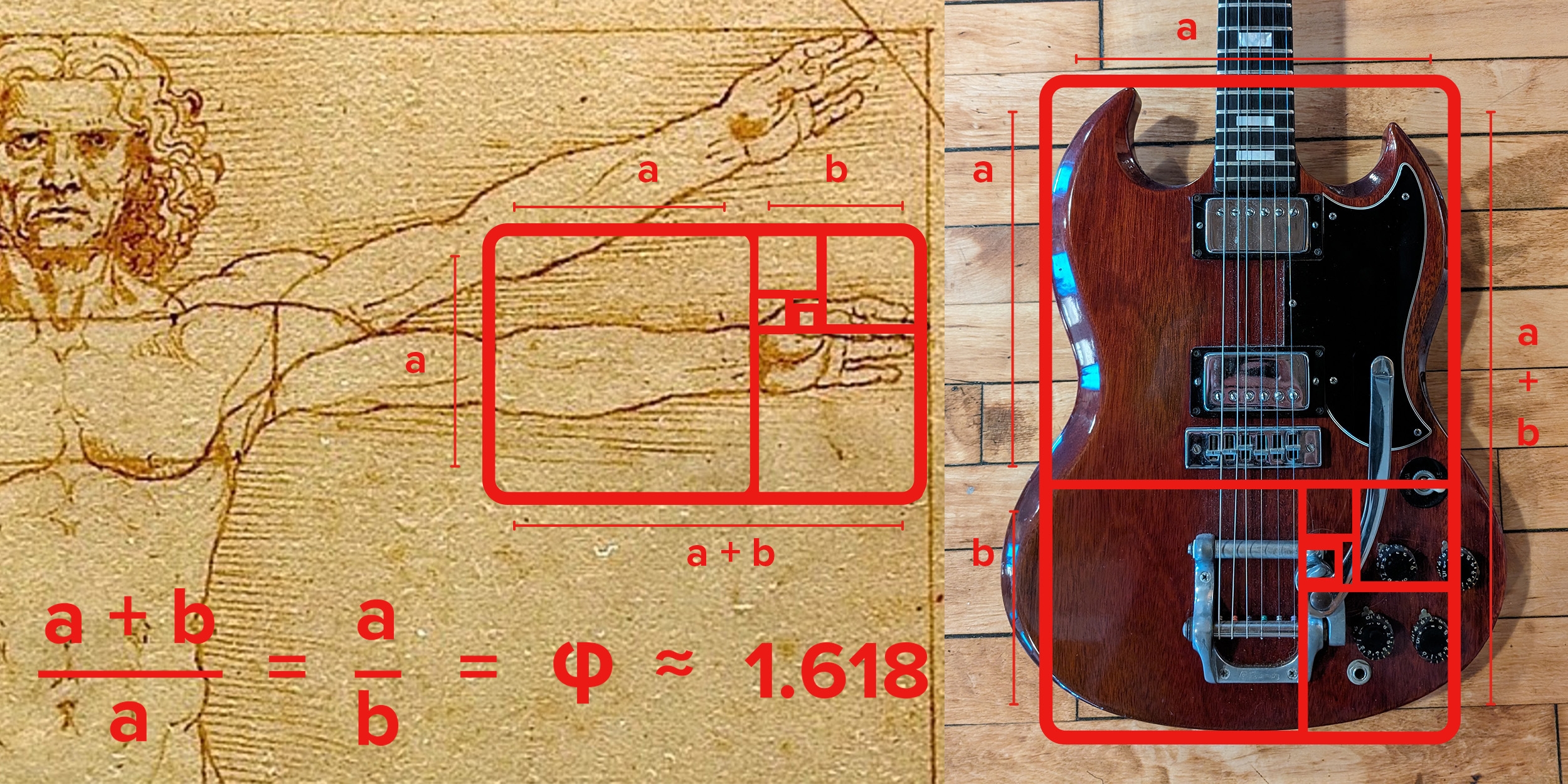
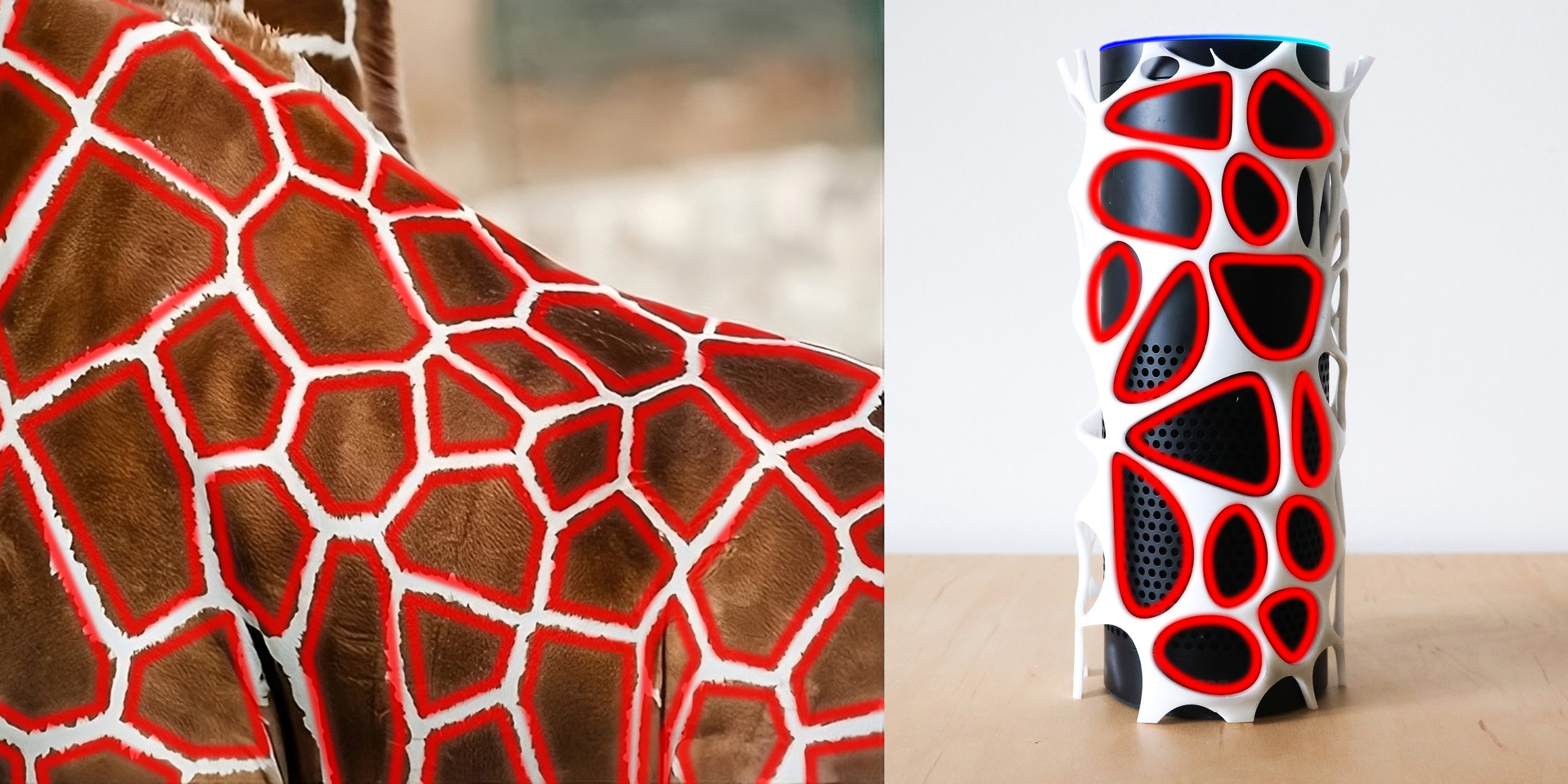
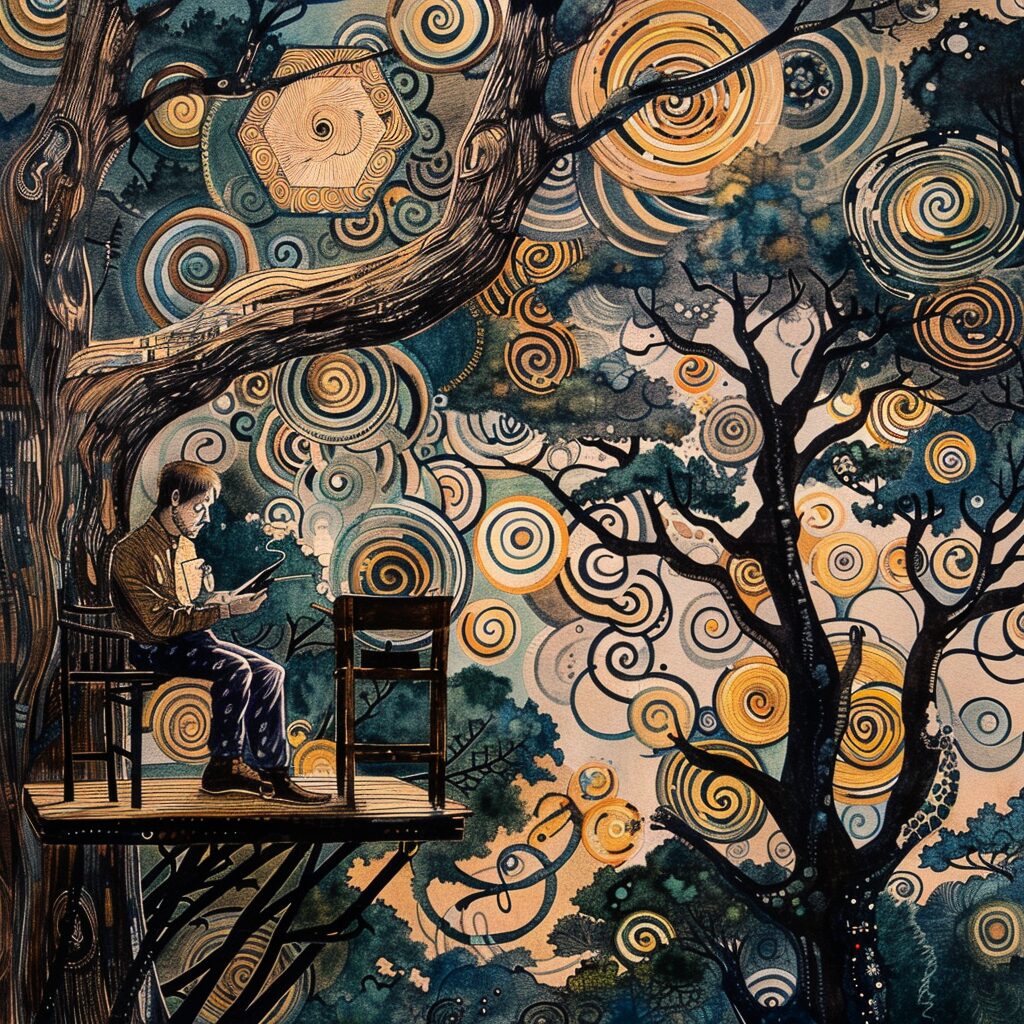
 Top
Top
